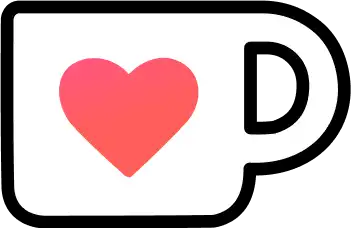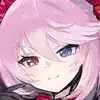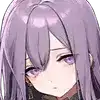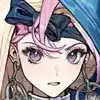Beginner
In Resonance Solstice, you play as a Train Conductor working for the Columba Trading Company in a world that has been transformed by catastrophic events. Humanity now lives in fortified Bonfire Cities connected by railways, with trains serving as the primary means of transportation and survival.
Your mission is to transport goods between cities, manage your crew (characters), navigate through the dangers of this world and on top of that, make a profit with your train while uncovering the catastrophe and why it happened.
Core Gameplay Loop
In contrast to other Gacha Games, Resonance Solstice doesn’t really focus on combat as the main mechanic to obtain resources, but instead has multiple systems that are equally important.
- Trading simulation: Buy low and sell high across different cities to build your fortune.
- Real-Time card combat: Deck building plays a huge role in automating your team setups so they can work on their own.
- Train management: Manage Wagons, customize and maintain your Train, build relationships with your crew members and much more.
If you are interested in learning more about each of those systems and how they work in depth, please check our guides below so you can get a good, quick start when you start playing Resonance Solstice.
Gacha System
The gacha in Resonance Solstice is pretty good, with a base rate of 2% for SSR units, 10% for SR and 88% for R units. Rate-up banners have a 1% for the featured unit, with the usual system of 50/50, meaning you will always get the unit if you lose your first SSR pull.
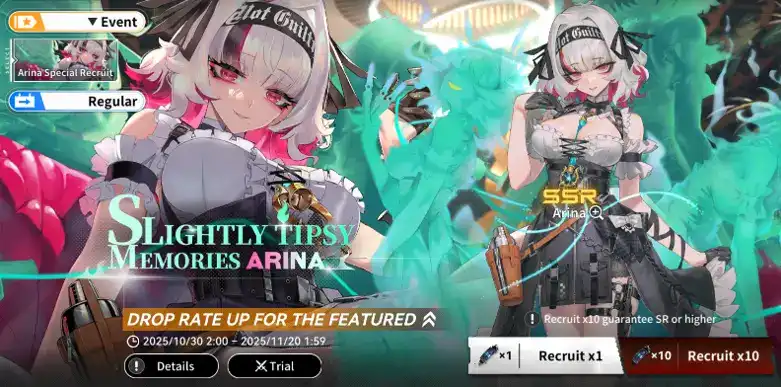
The pity system is also pretty good, since it ensures an SSR after 80 pulls, and starting from pull 71, your SSR rate increases 10% with each pull until you hit the guarantee. Important to note, however, pity is shared across all banners, meaning your pulls contribute to the same counter.
Only Limited and Collaboration banners have a separate pity counter, but they are pretty rare (only three have appeared on the Chinese server so far).
Rerolling (Optional but Recommended)
Like most gacha games, rerolling is not mandatory, but always recommended for a strong early advantage. The game is generous with resources, so even without rerolling, you can obtain meta units through normal play.
Each reroll takes 15–20 minutes, which is on the longer side for Gacha Games. Since there is no guest login system, you must create a new account each time with their account system (Email/Password).
You will start with two guaranteed SRs, 

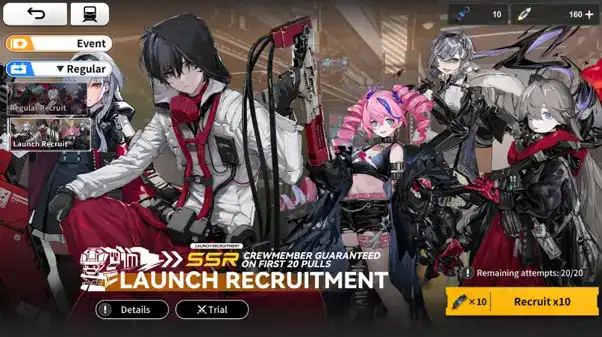
The game will also give you an SSR selector on the third day you log in, so make sure you use it to guarantee a strong character paired with your reroll target. Check our reroll guide if you need help deciding what unit to aim for when you start playing the game.
Team Building 101
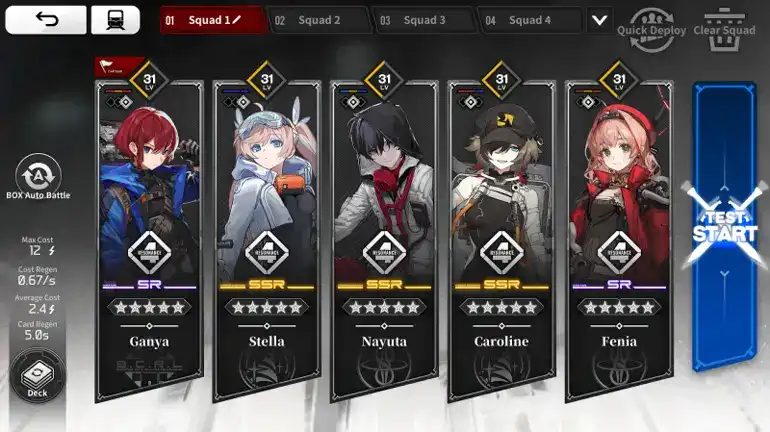
Team building in this game focuses more on the card synergies between your units rather than how strong they are on their own. However, as a general rule of thumb, most teams will follow the same patterns:
- Balanced Roles: A Tank, a Healer, and the rest of the units will be distributed between Damage Dealers and Utility (CC, Debuffers, Sub-DPS, Shielders etc.).
- Rarity doesn’t matter: While SSR characters tend to be stronger, there are plenty of SR and R units that are meta even by today’s standards on the Chinese server.
- Character Positions: You (almost always) need a Frontline to take the damage for your units, while your Damage Dealers and Supports are in the Middle / Rear lines.
- Resonances are Important: Dupes (Awaken) are good, but what makes or break a lot of Deck setups are the Resonances (skill trees) so make sure you always read them carefully and upgrade according to your needs.
The best thing about Resonance Solstice is that they have a great Import/Export function for people who don’t want to deal with setting up their crew members, items and card weight/order, so you can always check our Team Database if you need help with team building.
Combat Basics
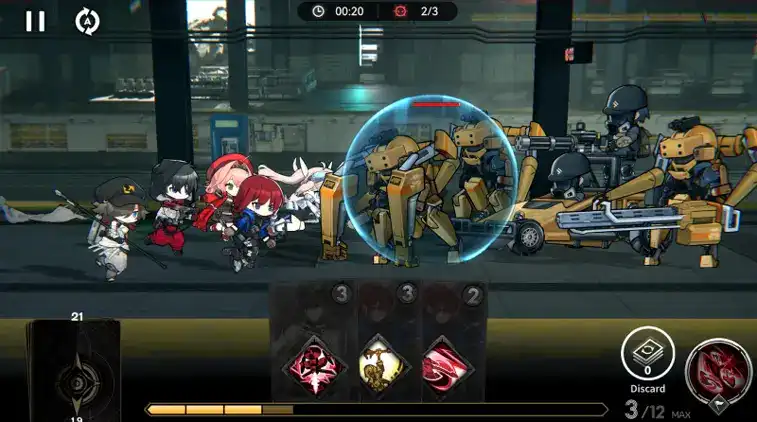
Your crew consists of five units to face waves of enemies and/or bosses, where instead of strict turns, you drag and play cards in real-time to build combos, and use the Ultimate skill of the leader of your crew (which you can select). Good teams come from timing and deck synergy, rather than how strong your units are individually.
Each enemy has their unique traits, resistances and weaknesses. You can view detailed stats in the in-game Archive. Long term, you want to build multiple teams to deal with bosses that have specific resistances, but don’t worry too much about this when you are just starting out.
While in combat, there are seven card colors, each one with a different functionality in your deck:
- Red: Cards that focus on offense.
- Blue: Cards that focus on defense.
- Green: Cards that focus on healing.
- Yellow: Cards that focus on resources, including drawing cards, retrieving cards, and restoring Cost.
- Purple: Cards with special effects, including generating Derivatives, forming environments, summoning units, controlling units, and other cards with special mechanisms.
- Black: Cards that cannot be actively played. Usually, they need to be discarded to trigger their effects.
- Orange: Cards with powerful effects. They are only generated when certain conditions are met.
Some cards can have multiple functionalities, such as a Yellow card applying status effects and/or dealing damage, so this is to be used as a reference only.
Trading
Trading is a major part of the Resonance Solstice gameplay loop, letting you earn money by transporting and selling goods between cities. The key principle is pretty simple, buy low and sell high, but success depends on planning efficient trade routes, managing fatigue, making sure your train is properly maintained and using city systems effectively.

A simple guide on Trading: You will mainly focus on trading Local or Specialty Goods (marked with a yellow star) as they sell for much higher prices in other cities. Avoid selling them where you bought them, as they will only sell for half price. You can also haggle to improve prices, though it isn’t guaranteed to be successful.
Each city also has different systems that can help you make more money, including City Investment, Warehouses, Manufacturing (Crafting), the BCRL Agency and much more. For a more detailed trading guide, please check our full guide instead.
Last Tips for a Good Start
- Save currency for Limited Banners for the characters you like the most. You can see our Character Database to see what units are coming in the future.
- Focus on building one solid team first, rather than trying to develop multiple ones. Resources are scarce early on.
- Spend time experimenting with character card synergies, Auto vs Manual and setting up your Decks to understand what works and why some team setups are so strong.
- Enjoy the non-combat elements the game has to offer! Resonance Solstice is a game about Trading first; combat is a secondary system for extra resources.
- There is no ranking or competitive elements in this game, so take it slow and enjoy the story and events the game has to offer.
- The game has a fantastic Archive system where you can learn a lot about gear, characters and in-game systems. Make sure you check it.




